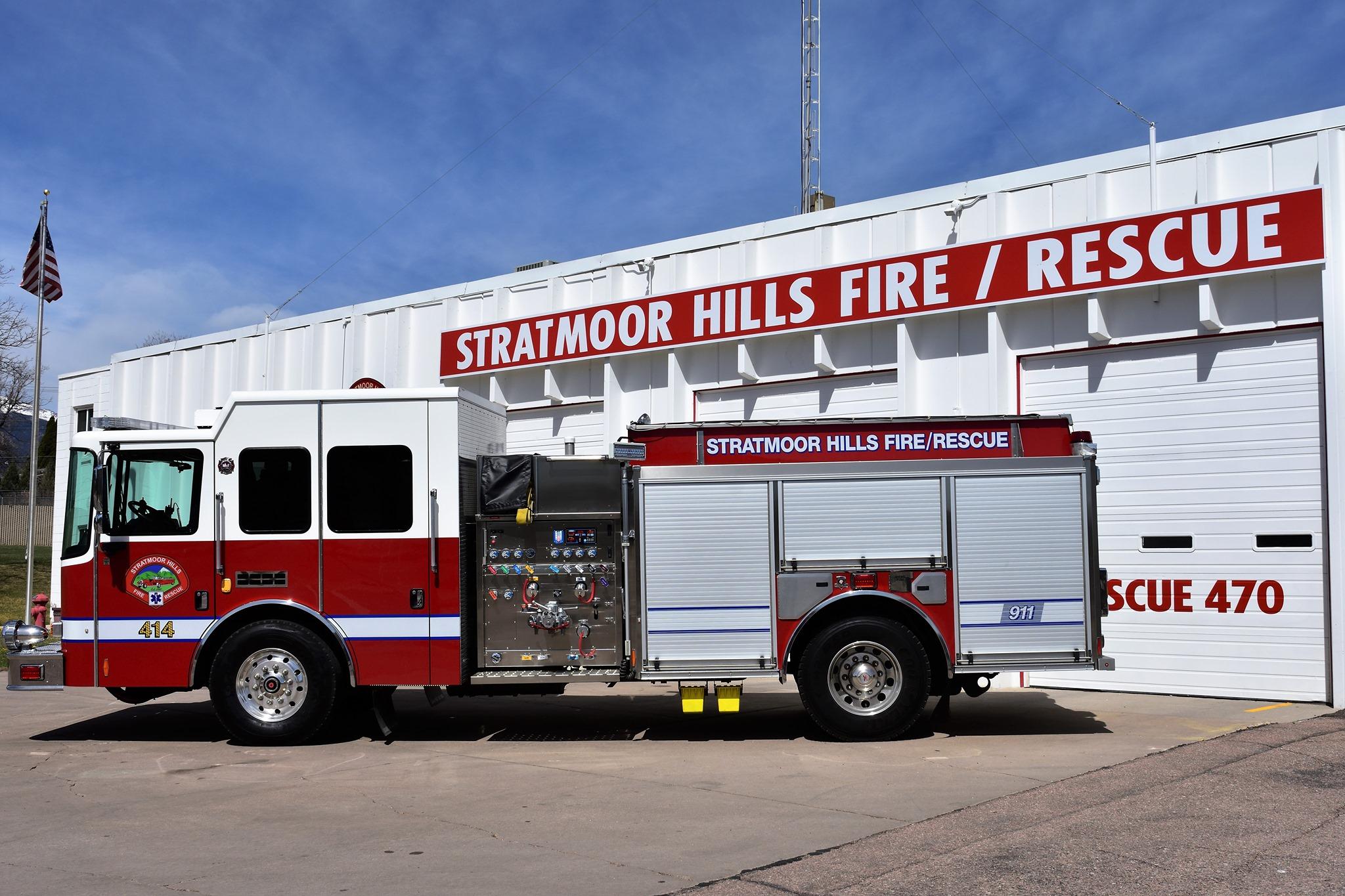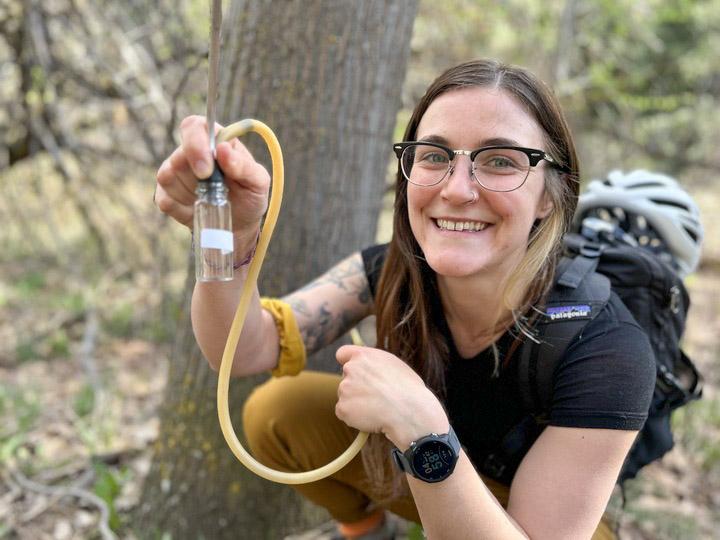
For Shawn Bittle, the Stratmoor Hills Fire District chief, the need was clear: El Paso County fire departments needed more tools to limit out-of-control fires in homeless camps.
It was late 2022 and Bittle’s department just south of Colorado Springs had recently dealt with a massive encampment fire that saw vehicles, tents and other shelters set ablaze, as well as the explosion of as many as 50 propane tanks.
He had watched the camp grow for months and warned of what he saw as a fire danger.
"I have no problem with people trying to survive and live, but they have to do it in a safe manner that doesn't cause danger to other people,” Bittle said. “And that's where my hands are tied.”
That’s because in Colorado, firefighters cannot conduct direct enforcement of fire codes. That responsibility falls to the county.
The encampment was on private property with an owner willingly allowing people to stay on his land. And while Bittle said his firefighters had visited the property multiple times to answer medical emergencies and had not met resistance from the landowner, they felt there wasn’t much he could do about the fire risk. Bittle said the county did not respond to repeated requests for help.
The issue of encampment fires is growing in El Paso County.
Between October 1 and the end of last year, the Colorado Springs Fire Department responded to 246 homeless fires. So far this year, they’ve responded to 25 more.
Bittle said his Stratmoor Hills Fire District, which covers just four square miles, ran 196 emergency fire calls for fires set in encampments in 2023, up from 69 such calls in 2022.
“We had seven fires in one night,” said Hanover Fire District chief Carl Tatum.
At the Stratmoor Hill encampment, law enforcement had previously responded to service calls nearly 70 times. And Bittle’s department had been called there more than three dozen times without the authority to address the root fire hazards.
Weather conditions led to low fire danger at the time of the 2022 blaze and the fire did not impact other nearby homes.
On October 25, 2022, two weeks after the fire at the Stratmoor Hills encampment, Bittle told the El Paso County Board of Commissioners during a public hearing that he and other local fire chiefs saw growing local homelessness as a major public safety hazard.
Without greater cooperation from the county in enforcing fire code violations or greater authority given to fire officials, Bittle said his department could only watch as fire hazards grew.
“The El Paso County Fire Chiefs Council is very concerned that our next major county fire conflagration will start from another unregulated and unsafe homeless camp,” Bittle told commissioners. “Lives and homes will be lost, and then it will be too late.”
Chief Bittle called for the formation of a committee or task force during this public meeting, and commissioners signaled their support for such a group and for working toward solutions.
“I agree, it’s a great idea. Let’s get together,” said Commissioner Longinos Gonzalez Jr.
El Paso County fire departments formed the Homeless Fire Task Force to find ways to curb the growing problem of fire danger in the encampments of the Pikes Peak Region.
According to Bittle and four other regional fire chiefs contacted for this story, the group began meeting in late-2022 and continued through mid-2023. They said multiple county staff attended the meetings, ranging from code enforcement to county attorney’s office staff along with representatives from the El Paso County Sheriff’s Department.
Their goal was to create a mechanism — either through county ordinance or drafted legislation given to state lawmakers — to inform property owners who allow encampments that they would be held liable for the damages resulting from fire safety hazards or toxic materials on their property.
“The property owners have to take responsibility and have to be held accountable for creating those unsafe environments that could affect the livelihoods of other citizens in our district or our county," Bittle said.
Yet, throughout the meetings, county staff told the task force the idea was untenable. Fire chiefs told CPR News that county staff would not work with them on crafting a proposal. By the spring, after only a few meetings, the task force disbanded. The chiefs said no county commissioners attended any of the meetings.
“The initial understanding was that the commissioners would engage more deeply as plans and strategies became more developed,” said Vernon Stewart, El Paso County Communications Department executive director, in an emailed statement. “Regrettably, this progression did not materialize.”
“We threw our hands up in the air,” said Kevin Junglen, task force member and Hanover Fire Protection District deputy chief.
'Challenges' in finding a solution
Bittle said the message from the county was that the issue of homelessness was an increasingly contentious one and such an ordinance change would not be seen as compassionate to people experiencing homelessness.
“We recognize the challenges in finding actionable solutions that align with the law and the diverse interests of all stakeholders,” Stewart said in his statement.
Kristy Milligan, CEO of Colorado Springs homeless services provider Westside CARES, said she hadn’t heard of the task force, but was skeptical of the proposals put forth.
Milligan suggested it would be better to invest in efforts to move people out of homelessness altogether.
“It has become increasingly ordinary to respond to homelessness — and the attendant challenges and dangers thereof — by enacting policy and laws that criminalize homelessness and maximize the liberty of enforcement officials,” Milligan said in an emailed statement.
“My experience tells me that no one is sleeping outside and starting a fire just to stay alive because they have a better option,” she wrote.
Stewart pointed to several measures the county has taken to try to address out-of-control warming fires, including the appointment of a code enforcement officer specifically dedicated to encampments, in partnership with the city of Colorado Springs, as well as a program which partially subsidizes encampment cleanup costs for landowners.
Firefighters argue those measures aren’t enough and won’t make a dent in the increasing problems they’re seeing with encampment fires. Bittle described the task force as an earnest attempt from the chiefs to find solutions, but the county’s unwillingness to move forward left them feeling shocked.
“When the situation occurs and the big fire happens and properties are lost, and lives are lost, that is not the time to create a task force on homeless camp fires,” Bittle said. “It's too late.”







